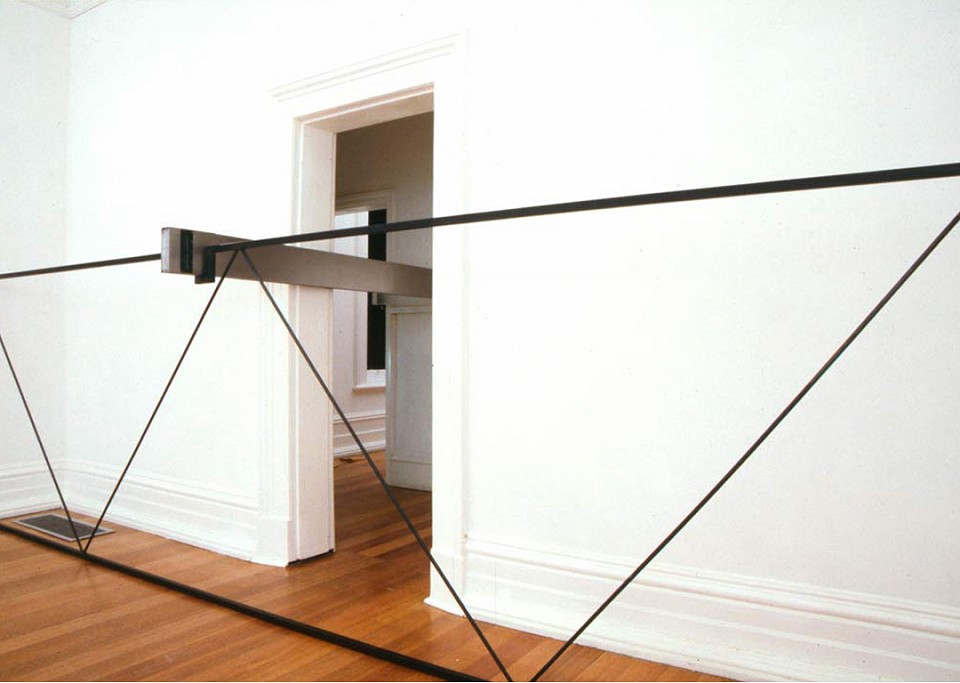catalogue essay
a thousand eyes by christopher chapman
Before the notion of vision, consider the figuring of the eye. At its most potent the eye signifies power: the sun, the Eye of God. We find, too, more sinister eyes; turned inward, violated, sexualised (Dali/Bunuel, Bataille). The twentieth century gives us new eyes: photographic, cinematic, electronic. The eyes refigure vision and allow it to operate in terms of the panoptic, the digitalised, the visual.
Vision becomes visuality when sight encounters the social; here vision is framed by body and psyche. Explicit manifestations of the twentieth century visuality range from the imposition of a surveillance camera to the use of the polaroid camera at a dinner party - in both instances social action is prompted by and perceived in terms of a transformation in vision. This double effect of visuality: being seen and seeing is manifest in Robyn Backen’s recent works. Remember the illusory magnifying peephole in Backen’s Sprung 1991, or the periscope that made complex notions of space and vision in Azolla 1991. Backen’s work for the Fifth Australian Sculpture Triennial and the 1993 Perspecta investigate social visual space mediated by technology and culture: veiled sight and compound vision.
The compound eye of the insect acts to create a mosaic image of the field of view, the highly developed eye of the dragonfly may contain up to 28,000 ommatidia, or individual retina units. For us, compounded or superimposed vision is generally figured in terms of the cliche. Kaleidoscopic or multivalent vision is a trope of altered perception (the double vision of alcohol or drug intoxication). Here the compounded eye signifies fragmentation, instability, falsity. Here we witness the socialisation of vision; any deviation from a social construct of visual reality is termed hallucination or misrecognition.
As Norman Bryson states: Between the subject and the world is inserted the entire sum of discourses which make up visuality, that cultural construct, and make visuality different from vision, the notion of unmediated visual experience. Between retina and world is inserted a screen of signs, a screen consisting of all the multiple discourses on vision built into the social arena.
1.Christopher Chapman Canberra, May 1993 (originally written for Fifth Australian Sculpture Triennial catalogue)
references
Carnivorous plants by Christopher Chapman, Art and Australia, Sept 1994





